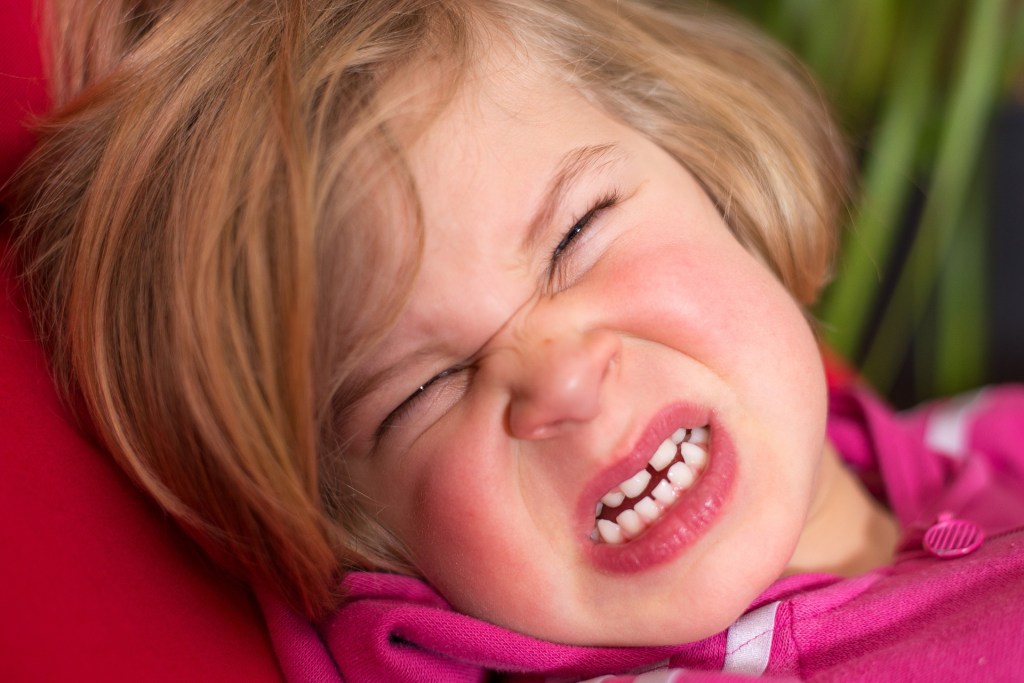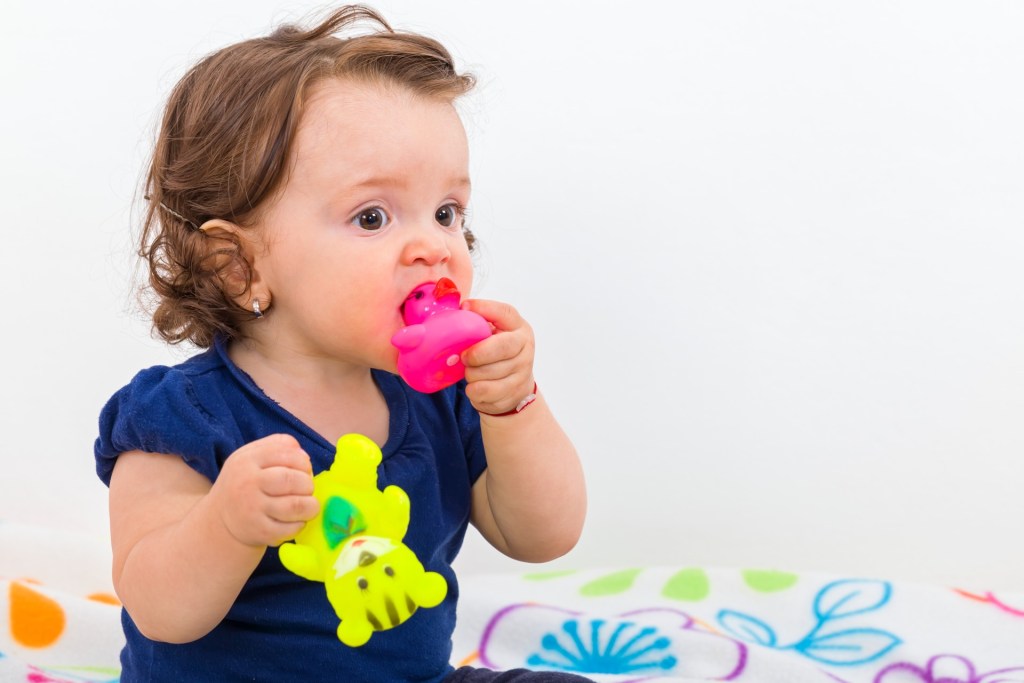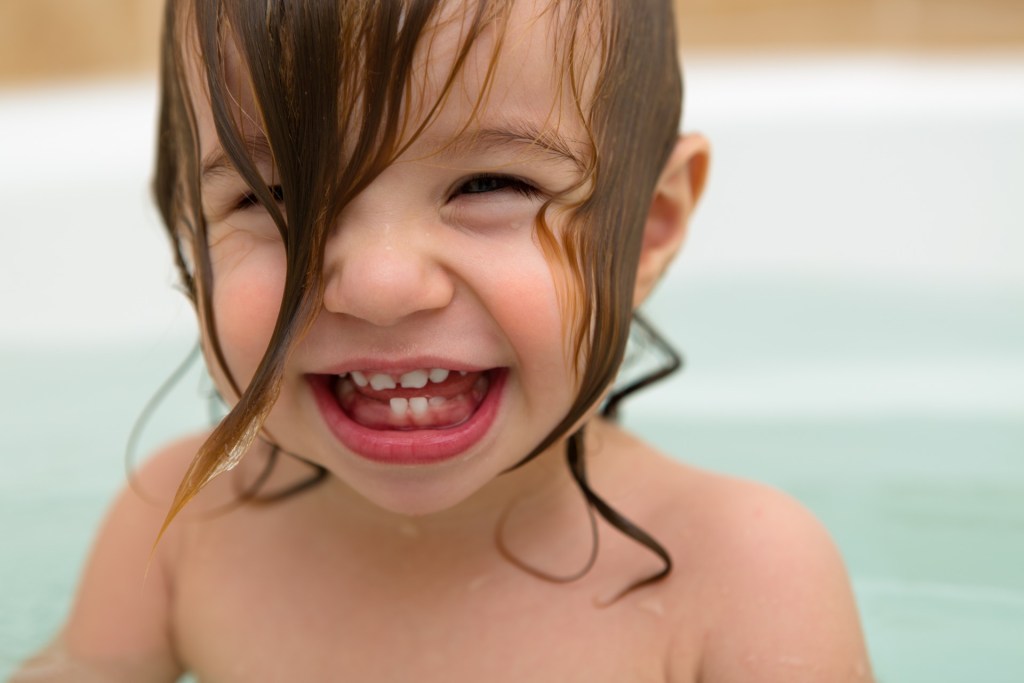Teething is a stage in a baby’s life that can bring about great joy, and equally, great pain. But teething doesn’t just occur when your little one is still in diapers. Teeth will continue to emerge for the better end of 2 years after the first one erupts through your kiddo’s gum line. Contrary to what some parents may think, their child’s teeth with continue to develop for quite some time after the first few “chompers” break through.
If your toddler is experiencing teething symptoms, now could be a good time to break out those teething rings, whip up a few homemade teething pops. However, there may be a few symptoms your little one is experiencing that even veteran parents may not be aware of. Here are some signs of teething in your toddler you’ll want to be on the lookout for.

Signs of teething in toddlers
Crankiness
Humans tend to be at the very least, slightly cranky when experiencing pain – no age range required. Add in a lack of clear communication to vocalize or express that pain and the inability to completely diminish it, and it can push toddlers over the edge. This can create the perfect scenario of temper tantrums, tears, and turmoil. Call it cranky, edgy, testy, or irritable, teething can cause toddlers to be touchy, even on the best of days
Low-grade fever
When toddlers’ teeth begin to pop through their gums, their bodies can react to this change in many ways, one of which being a low-grade fever. We’re talking about temps lower than 100 degrees Fahrenheit. The fevers that are just high enough to make your tot warm to the touch, flushed in the cheeks, and feeling so poorly that they may want to lay or be held a bit more. However, in turn, a fever that is not high enough to warrant a phone call to their pediatrician or coupled with additional and more serious symptoms.
Ear pulling
While this symptom can be indicative of other issues such as earaches or other ENT (ear nose and throat) issues, ear pulling is also a sign of teething – especially in toddlers. Because toddlers’ 2- and 3-year-old molars sit further back in their mouths, ear pulling can be a symptom of those molars emerging from below their gum line. This pain can sometimes travel up into the ear, causing your toddler to pull or tug on their ear lobes, letting you know there could be trouble brewing.

Change or lack of appetite
Eating, or just chewing in general, when experiencing any kind of tooth or mouth pain can be an activity most people — of any age – wouldn’t want to engage in. For some toddlers, they easily put together the idea that when they eat while teeth are developing in their mouths, it causes additional pain and anguish. Because of this, they decide to stop eating or slow down their consumption greatly, which can cause concern in parents. This is often one of the first signs your child has a tooth emerging.
Disruption in sleep patterns
Mouth pain can disrupt many aspects of life in kids, especially sleep. Teething can throw off routines easily, thus creating ripples in your toddler’s sleep patterns. Whether from pain, pressure, lack of control of the situation, or exhaustion, sometimes kids just can’t fall or stay asleep for long periods of time. This lack of sleep can often exacerbate their struggles further.
Drooling
Drooling by itself isn’t always a sign of teething. That being said, it can be a more prominent sign in toddlers who are not overly drooly in their regular day-to-day lives. Drooling, while common in kids in general, is not something every child does in their early years. Some children drool more so than others, so it’s important to keep in mind that yes, teething toddlers’ bodies may produce more saliva, causing the excess drooling in order to combat the pain, but it’s not a tell-tale sign of teething alone.

Tips for soothing your toddlers’ sore gums
- Chilled food and drink such as applesauce cups, yogurt, chilled sliced fruits, frozen yogurt, or toddler-friendly sorbets.
- Lots of water. It’s an important element in healing and hydration.
- Teething toys and chewers (especially the kind that go into the freezer)
- Teething gels that can topically numb the area around the tooth and gum line, under your pediatrician’s direction.
- Medications such as Tylenol, also under the direction of your child’s pediatrician.
Toddlers experiencing teething symptoms can struggle with the pain and discomfort of teeth breaking through. Symptoms can often mimic other issues such as earaches, colds, allergies, and other respiratory illnesses, making it difficult sometimes to pin down the real cause. It’s for this reason we recommend you speak with your toddler’s pediatrician should symptoms such as these occur and persist.



